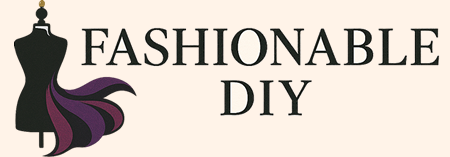Zero Waste Wardrobe: DIY Techniques for a Greener Closet
Learning to Thrift Wisely
Thrifting offers a sustainable alternative by giving pre-loved items a new life while reducing demand for new production. When learning to thrift wisely, individuals can focus on quality materials and timeless styles, ensuring that their selections can be worn for years to come. It’s important to set aside sufficient time to browse and be open to discovering unexpected treasures.
Mindful thrifting also involves considering fit and alterations. A piece that might not fit perfectly off the rack can often be tailored to suit personal style, extending its usability. This approach also encourages creativity, allowing individuals to express their unique fashion sense without contributing to wasteful practices. By prioritizing second-hand shopping, consumers actively participate in a circular fashion model, supporting a more sustainable future.
Community Engagement and Clothing Swaps
Engaging with the community through clothing swaps and fashion sharing platforms can significantly contribute to reducing waste and promoting a circular economy. These activities not only offer an excellent way to refresh one’s wardrobe but also strengthen communal ties and reinforce sustainable practices.
Organizing Local Swap Events
Local clothing swap events provide a practical method for individuals to exchange garments without spending money. Hosting such events requires selecting a suitable venue that can accommodate participants comfortably. Community centers, school halls, or even larger private residences often serve as appropriate locations for these gatherings.
Promotion plays a critical role in ensuring turnout for the event. Utilizing social media platforms, local community boards, and word-of-mouth can effectively spread the word. Participants typically bring a set number of clothing items in good condition. This ensures that everyone has a fair chance to exchange their unwanted pieces for new additions to their wardrobe, thus minimizing textile waste.
Event organizers might set guidelines to maintain quality and organization. For instance, categorizing items by type and size can streamline the swapping process. Providing refreshments or small incentives can enhance the experience, encouraging more community members to participate.
Joining Fashion Sharing Platforms
Fashion sharing platforms serve as a digital alternative to physical swap events, extending the reach to a broader audience. These platforms allow users to upload photos of clothing items they wish to exchange. Once listed, other users can view and offer their own items for a potential swap.
Participation in these platforms supports the principles of the circular economy by facilitating the reuse of garments. Users find renewed value in clothing pieces that may otherwise be discarded.
It’s important to review guidelines and shipping policies associated with these platforms to ensure smooth and fair transactions. While online swaps provide convenience, they also underscore essential sustainability principles, reinforcing actions that reduce textile waste and foster community involvement.
Rental Fashion: A Sustainable Alternative
Rental fashion offers innovative solutions for reducing waste and promoting mindful consumption. It allows individuals to enjoy a rotating wardrobe while minimizing the environmental impact of clothing production and disposal. This method encourages consumers to embrace sustainable choices through clothing rental services.
The Rise of Clothing Rental Services
Clothing rental services have gained popularity as they offer an alternative to traditional shopping habits. Companies like Rent the Runway lead the way by providing a wide array of designer garments available at a fraction of their retail cost. This model appeals to those who appreciate fashion variety without the accompanying environmental burden.
These services cater to special occasions, everyday wear, and maternity needs, allowing users to explore diverse styles. The convenience of online platforms simplifies the process, making it easy for customers to select, rent, and return clothing. Additionally, rental services embody a philosophy of sharing and recycling, contributing to a circular fashion economy.
How Renting Can Reduce Consumption
Renting fashion directly addresses the issue of overconsumption. By choosing to rent, consumers decrease the demand for new clothes, which in turn reduces the resources required for production. This shift supports a culture of mindful consumption, encouraging individuals to reconsider the necessity of owning every item.
For many, the appeal lies in the ability to experience new styles without permanent commitment. Renting prevents the accumulation of seldom-worn garments, helping maintain a streamlined and functional wardrobe. Efforts to normalize renting can significantly reduce textile waste and its negative environmental impacts, promoting a more sustainable approach to fashion.



